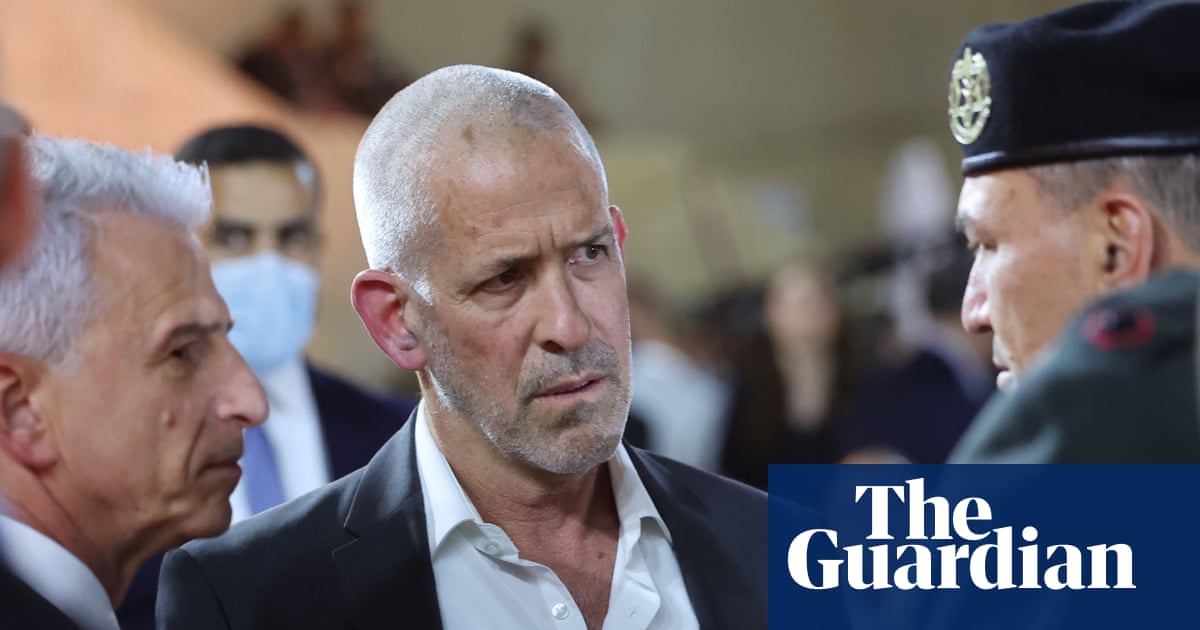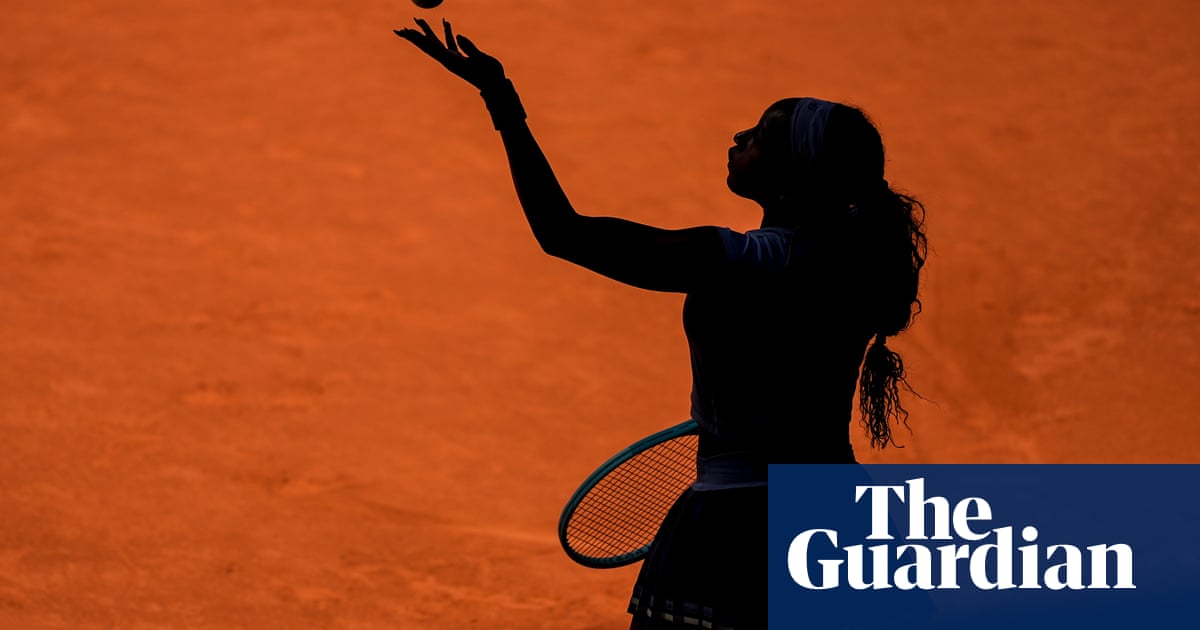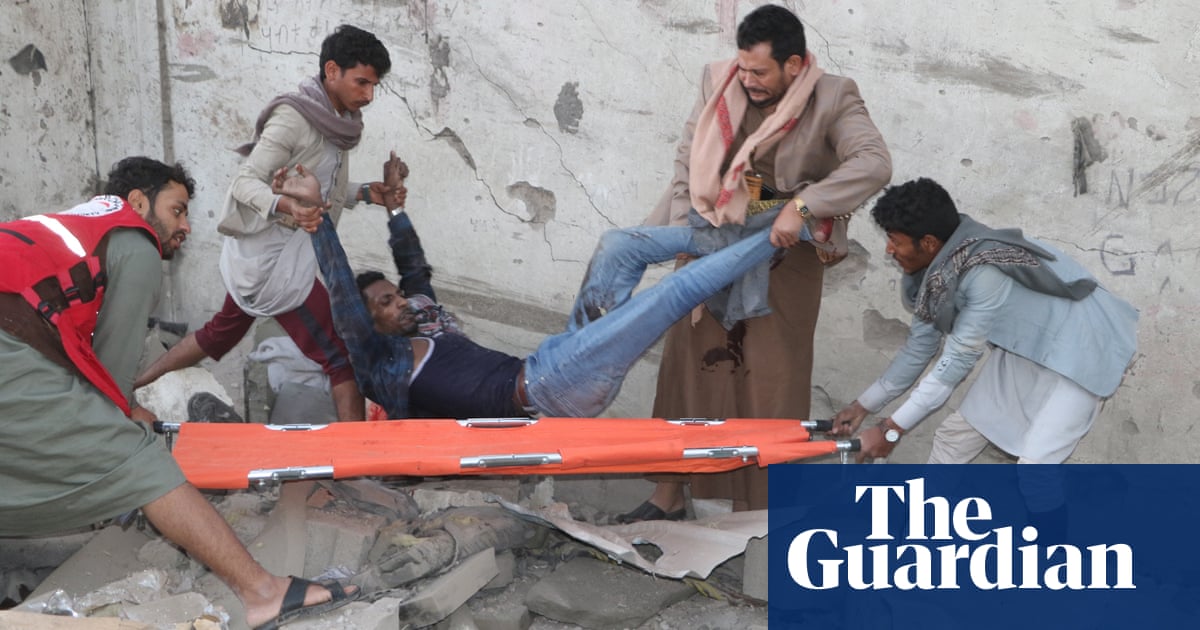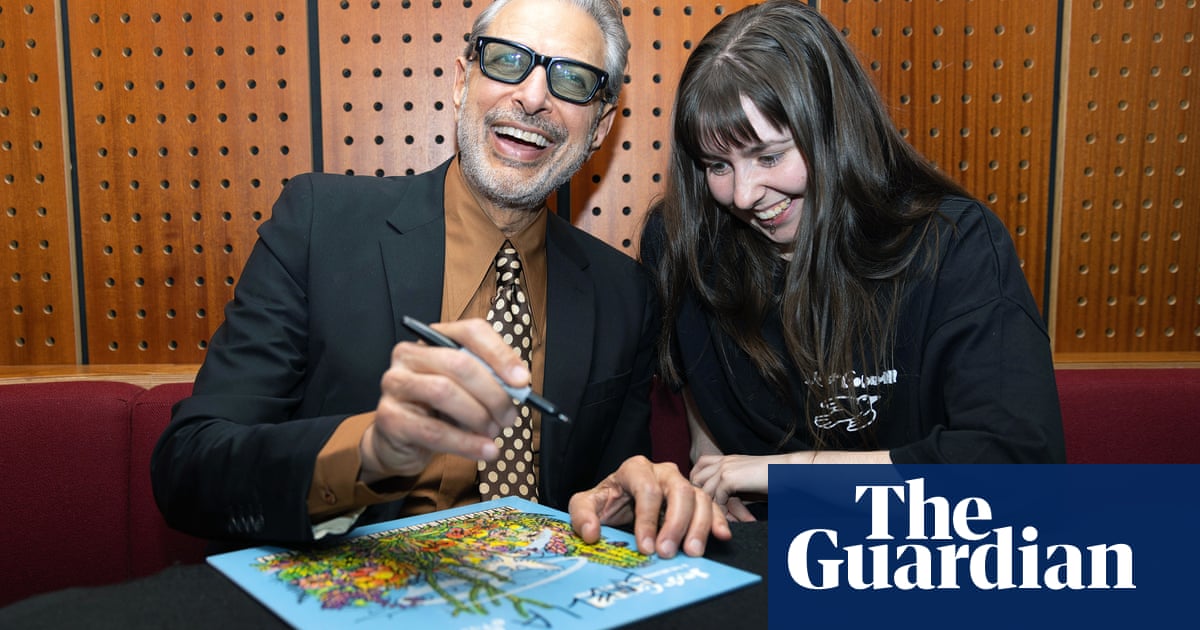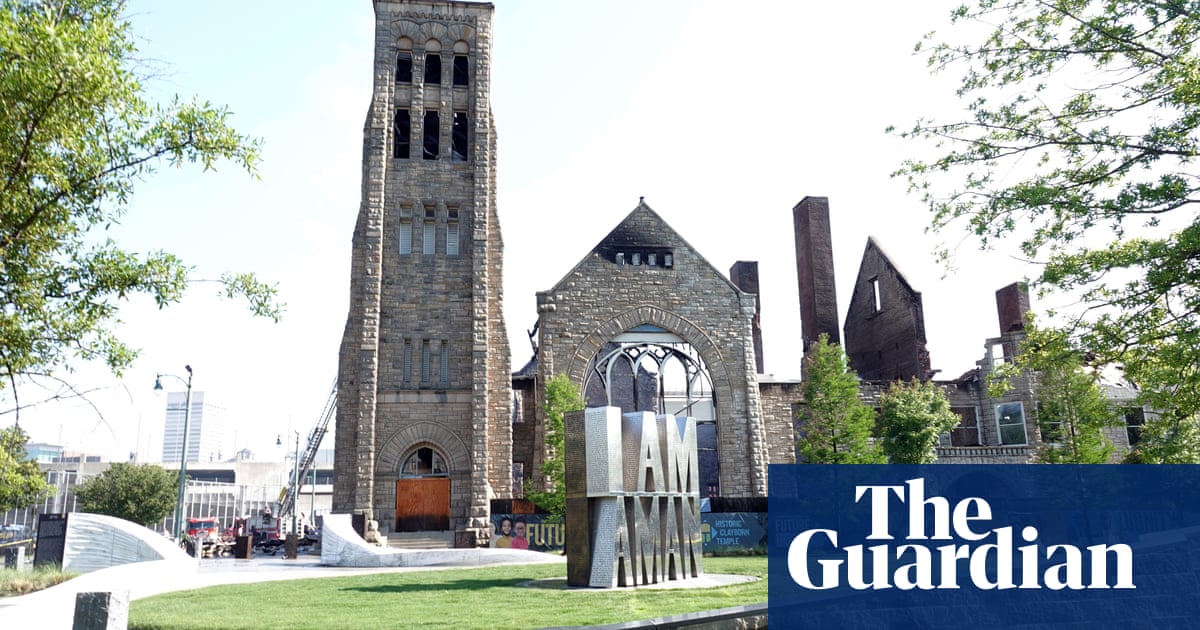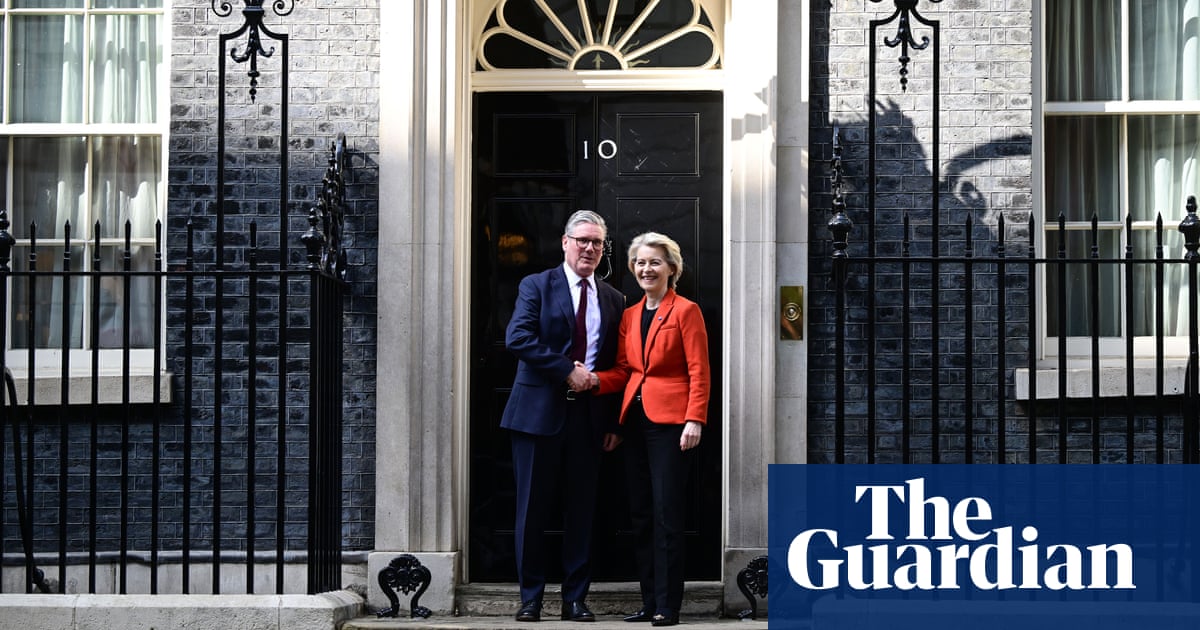A pair of huge turquoise domes swell up on the skyline of Tashkent, the capital of Uzbekistan, perching on the jumbled horizon like two upturned bowls. One gleams with ceramic tiles, glazed in traditional Uzbek patterns. The other catches the light with a pleated canopy of azure metal ribs. Both recall the majestic cupolas that crown the mosques of the country’s ancient Silk Road cities of Samarkand, Khiva and Bukhara. But here, they cover structures of a very different kind.
The ribbed metal dome crowns the home of the state circus, its futuristic-looking big top seeming to have been crossed with a UFO. Built in 1976, it’s big enough to hold an audience of 3,000. The ceramic dome, meanwhile, looms over the bustling chaos of the city’s main market, Chorsu Bazaar, built in 1980 as a wonderworld of fruit, meat and fish, sprawling across an area the size of two football pitches. Both are dazzling works of Soviet modernism, and part of a remarkable group of buildings that the country has just submitted to Unesco, in the hope of having them granted world heritage status.
“People tend to think of Uzbek heritage as our ancient Islamic monuments,” says Gayane Umerova, chair of the country’s Art and Culture Development Foundation (ACDF). “But we need to realise that we are in danger of losing the more recent layers of history, due to urban development. We have to act now.”
Over the last few years, the ACDF has been highlighting Tashkent’s unique postwar heritage, hosting conferences, commissioning expert research, and now publishing two hefty books about the period, as well as putting the topic in the global spotlight with an exhibition at the Venice architecture biennale, opening shortly. This push was triggered in 2018, following a public outcry over the demolition of a beloved cylindrical concrete movie theatre, the House of Cinema, built in 1982. It was hastily bulldozed to make way for a $1.3bn commercial development, a bloated cluster of generic glass towers known as Tashkent City.

“It was a big loss for our society,” says Umerova. “It wasn’t just about the building –people had grown up with the cinema as a place to go on dates, see friends, hang out. Its sudden loss made us look at what else might be in danger.”
In the line of fire, potentially, is one of the most unusual collections of modernist buildings anywhere in the world. About 2,000 miles from Moscow, Tashkent occupies a fascinating position in the history of the Soviet Union as a showcase city, bridging east and west. It was designated a “beacon of socialism in the east”, conceived as a vast vitrine to display the successful socialist transformation of a non-Russian city. Its image of prosperity, abundance, leisure and progress would show how communism could be adapted to the diverse, far-flung populations of Central Asia – and therefore to the rest of the world.

An earthquake in 1966 provided a convenient excuse to raze much of the historic city and impose a masterplan of wide avenues dotted with grand, orientalist structures that would speak of Tashkent’s new role as the modern gateway to Asia. The buildings are a fascinating mix, combining the latest technologies and construction techniques of international modernism with ornamental details that hark back to the 15th-century architecture of the Timurid dynasty. That became adopted as the official national style, and remains so to this day, despite it being of little historic relevance to Tashkent.
“Interestingly, the buildings designed for Tashkent in Moscow were much more decorative and ‘orientalist’ than those designed locally,” says Ekaterina Golovatyuk, a Russian architect whose Milan-based practice Grace has been leading the preservation strategy. “It was like they were trying to present an imaginary, exoticised image of Tashkent back to local people.”
She is standing outside the former Lenin Museum, now the state history museum, a gleaming white marble jewellery box. Wrapped with supersized latticework screens, it appears to float above a recessed glass lobby on a hidden steel frame. The building was created in 1970 by the snappily titled Central Scientific Research and Experimental Project Institute for Entertainment and Sport, an elite Moscow bureau that delivered prestige projects across the USSR. Despite the bold modernist form, its design consciously draws on tradition, with the geometric screens referencing vernacular Uzbek panjara, or latticework grilles that provide shading and ventilation, as well as Islamic patterns (a fact not mentioned at the time). “The design was criticised locally for being superficial,” says Golovatyuk. “But it launched a new direction. Gradually, this would become the language of modernist Tashkent.”
The domed circus is a striking example of how these aesthetic attitudes evolved. It was first drawn up in the early 1960s, by architects Genrikh Aleksandrovich and Gennady Masyagin, as a brutalist flying saucer, studded with porthole windows. Construction began in 1965, but was halted by the earthquake. As time went on, the space-age design became historicised, clothed in traditional fancy dress. The inspiration was no longer a UFO, but an Uzbek piala, or teacup. Decorative concrete sunshades were added, in a form that echoed ancient Kufic script. The interior is a surreal mashup, where concentric cosmic rays radiating from the doorways became encrusted with traditional ornamentation, like a spaceship decked out in chintzy wallpaper.
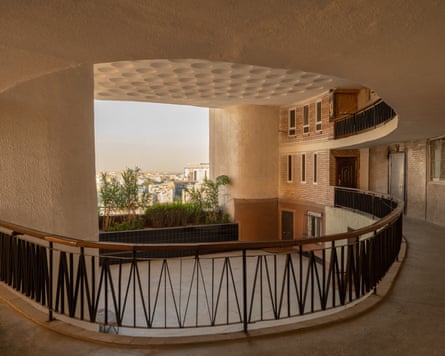
Other experiments to celebrate the regional context focused less on decoration than on local typologies. One of the most radical projects of the era is the Zhemchug (or Pearl) housing block, designed as a vertical expression of the traditional mahalla courtyard homes. Built in 1985, the 16-storey tower features a pair of communal courtyards every three storeys, providing space for children to play, while elderly residents sit out playing chess and drinking tea. Front doors are reached via outdoor galleries that look down into these back yards in the sky.
“I love its uniqueness,” says Dilara, who has lived here for decades. “We’ve used the courtyards for weddings, barbecues and drinking beer together. There is a strong sense of community.” A rooftop swimming pool, now a pond, was added to increase stability in the event of an earthquake. It is surrounded by mushroom-shaped sunshades that double as ventilation for all the kitchens down below.
Sadly, this inventive design didn’t take off. “It was the first building in Uzbekistan to use sliding concrete formwork,” says Golovatyuk, referring to a system where the moulds are moved up while concrete is poured continuously. “It was supposed to be cheaper and faster, but it turned out to be slower and much more expensive.” Still, its occupants seem to love it. They’ve even curated a little exhibition about its female architect, Ophelia Aydinova, in the lobby.

Cost may have deterred any repeat, but money was no object when it came to symbols of national pride. As the planned economy began to falter in the 1980s, the baubles of Soviet pomp became ever grander. As Golovatyuk puts it: “When a regime isn’t doing so well, the need for representation gets even bigger.” She is standing outside a prime example, the gargantuan Palace of People’s Friendship. Unveiled in 1981, its ornate hall seats over 4,000 in a pharaonic temple of culture, dripping with gilded ceramics and crystal chandeliers.
Designed by the team behind the Lenin Museum, led by Yevgeny Rozanov and Elena Sukhanova, it is a tour de force of Uzbek modernism. Raised on a plinth, the museum is wrapped in a muscular facade of panjara-inspired grille-work, crowned with a colossal frieze of abstract muqarnas, the sculptural stalactite motifs found inside the domes and niches of Islamic architecture. Inside, the ceiling of its triple-height atrium groans with pearly chandeliers, evoking dangling branches of cotton bolls, while the walls are lined with fluted blue tiles and expressionistic ceramic sculptures by Alexander Kedrin. The floors, meanwhile, writhe with geometric marquetry. It has the look of an immense marble Transformer, seemingly about to unfold into a great robotic creature and march towards the circus.
There are more wonders dotted throughout the city, beautifully photographed by Karel Balas for a Rizzoli coffee-table book, and meticulously examined in a 900-page tome for Lars Müller, with pictures by Armin Linke. The metro system is a particular treat, especially Kosmonavtlar (or Cosmonauts) station, built in 1984 as a cosmic fantasy of blue tiled walls, green glass columns and celestial light fittings, evoking the wonders of space exploration.
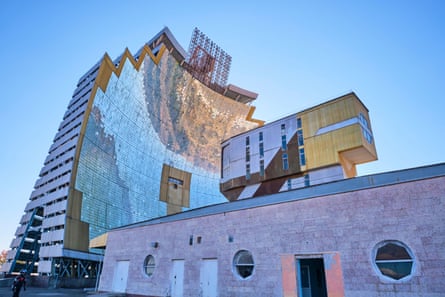
Perhaps the most spectacular of all lies an hour outside the city, perched on a hillside in Parkent. Looking like something dreamed up by a Bond villain, the Sun Heliocomplex is an astonishing sight, a 20-storey convex cliff of mirrors, able to channel the sun’s energy to a temperature of 3,000C. Completed in 1987, it was designed to test the resistance of materials to nuclear explosion and develop heatproof ceramics for the Soviet military. Since the collapse of the USSR, it has hobbled along, working with agriculture, textile and mining industries. Although it was a classified project, off-limits to most, it was intended as a showcase of applied arts, featuring sculptural ceramic screens and dazzling planetary chandeliers by artist Irena Lipene. A seven-tonne example will be shown in Venice, capturing in crystal the end-of-the-world glamour of the nuclear age.

 17 hours ago
14
17 hours ago
14




